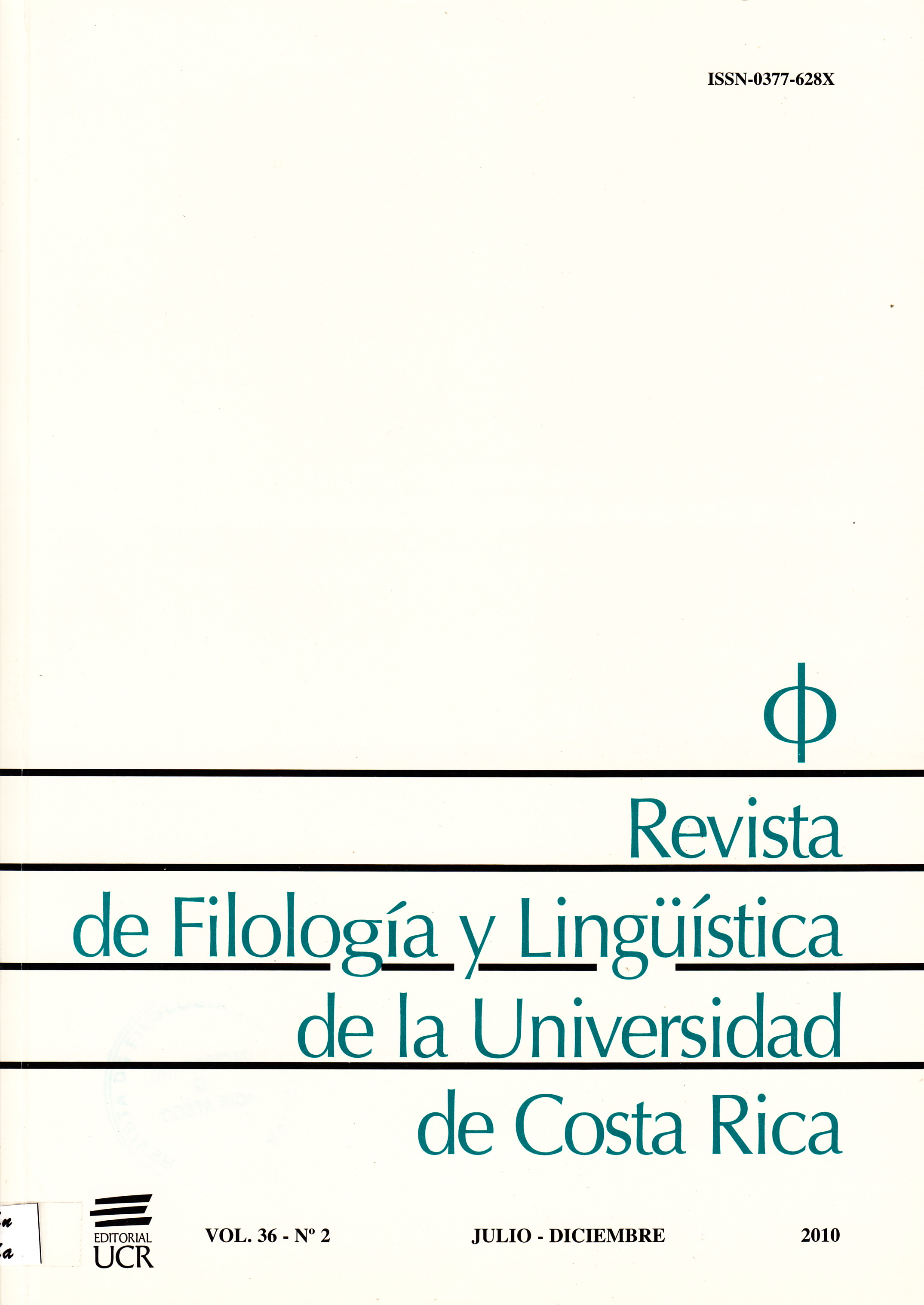Resumen
En este ensayo se discuten las secuelas experimentadas por el refugiado cubano en los Estados Unidos. Se analizan estas consecuencias en términos de su identidad cultural y lingüística, los efectos psicológicos y existenciales, al igual que su manera de vestir. Sobre este último apartado se examina el abrigo del protagonista-narrador, ya que la vestimenta se convierte en el leit-motif de la novela y sin este ropaje el texto de Montes Huidobro no existiría.Citas
Abellán, José Luis. 1987. “El exilio como categoría cultural. Implicaciones filosóficas”. Cuadernos Americanos. 1(1): 42-57.
Alvarez-Borland, Isabel. 1998. Cuban-American Literature in Exile: From Person to Persona. Charlottesville: U of Virginia P.
Barthes, Roland. 2006. The Language of Fashion. (Trad. Andy Stafford). Oxford: Berg.
Bousoño, Carlos. 1966. Teoría de la expresión poética. (4a ed). Madrid: Editorial Gredos.
Cabrera Infante, Guillermo. 1990. “The Invisible Exile”. Literature in Exile. (Ed. John Glad). Durham: Duke UP.
Chen Sham, Jorge. 2001. Radiografía del sujeto agónico: culpa y transcendencia en la novelística de Rima de Vallbona. San José: Perro Azul.
Eco, Umberto. 1981. Lectura in fabula. Barcelona: Lumen.
Edwards, Robert. 1988. “Exile, Self, and Society”. Exile in Literature. (Ed. María Inés Lagos-Pope). Lewisburg: Bucknell UP. 15-31
Gass, William. 1990. “The Philosophical Significance of Exile”. Literature in Exile. 1-8.
Gil, Lourdes. 1998. “Against the Grain: Writing in Spanish in the USA”. Remembering Cuba: Legacy of a Diaspora. (Ed. Andrea O’Reilly Herrera). Austin: U of Texas P.
González Montes, Yara. 2007. “La ensayística en la obra literaria de Matías Montes Huidobro”. Matías Montes Huidobro: su obsesión por la escritura. Ed. Yara González. Miami: Ediciones Universal.
Ilie, Paul. 1981. Literatura y exilio interior: escritores y sociedad en la España franquista. Madrid: Fundamentos.
Knapp, Bettinna. 1991. Exile and the Writer. Esoteric and Esoteric Experiences. A Jungian Approach. Philadelphia: The Pennsylvania UP.
Lurie, Alison. 1992. “Clothing as a Sign System”. The Language of Clothes. London: Bloomsbury.
Montes Huidobro, Matías. 2010. Cuba detrás del telón. Insularidad y exilio (1969-1979) .Miami: Ediciones Universal.
(1975). Desterrados al fuego. México: Fondo de Cultura Económica.
(1991). “Monad, Quantum and Entropy in Cela’s Chaos”. (Trad. Luis A. Jiménez). Ometeca. 2 (2): 55-70.
Montague, Ken. 1994. “The Aesthetics of Hygiene: Aesthetic Dress, Modernity and the Body as Sign”. Journal of Design History 7(2): 91-112.
Ricoeur, Paul. 1985. Memory, History, Forgetting. Trad. K Blomey y D. Pellaver. Chicago: Chicago UP.
Said, Edward. 1990. “Reflections on Exile”. Out There: Marginalization and Contemporary Cultures. (Ed. Russell Ferguson et al). Cambridge: The M.I.T. P.
Saussure, Ferdinand de. 1955. Curso de lingüística general. Trad. Amado Alonso. Buenos Aires: Editorial Losada.
Siemens, William. 2007. “Transformaciones paralelas en Desterrados al fuego”. En: González (ed), 17-25.
Ugarte, Michael. 1989. Shifting Ground: Spanish Civil War Exile Literature. Durham: Duke UP.
Unamuno, Miguel de. 1999. Del sentimiento trágico de la vida. (3a. ed). Madrid: Editorial Espasa-Calpe.
Zavala, Iris, M. 1991. Unamuno y el pensamiento dialógico. Barcelona: Editorial Anthropos.

